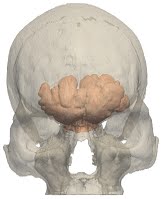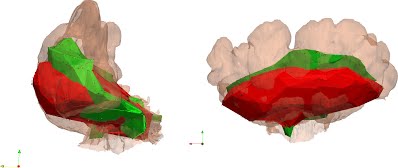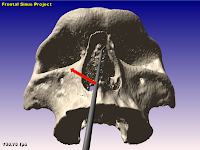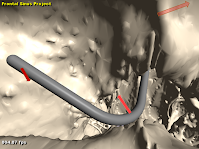Concentric tube robotic tools for Frontal Sinus surgery
In this project, a minimally invasive, concentric tube based robotic tool is designed and evaluated for use in frontal sinus surgeries. The results showed that the proposed design has 62% better coverage of the frontal sinus space compared to the standard of care tools.
Research Members: Isuru Godage, Raul Wirz, Paul Russell, Madeleine Samuelson, and Robert J Webster.
The frontal sinus is a cavity situated behind the brow ridges which is an essential part of the immune defense carried out by the nose and different problems can appear in the frontal sinus requiring a surgery, such as tumors, polyps and fractures due mainly to car accidents or sport. Since the frontal sinus is a cavity difficult of reach due to the tiny space and the difficult access (Fig 1), there are different frontal sinus approaches in the surgery: From the interior, going through the nose (endonasal procedures); From the exterior, going through the skin (such as the osteoplastic flap or the Lothrop procedures); or a combined approach (interior and exterior approaches together). Exterior approaches are invasive, leave visual scars and have more physiological damage in the patient. However, considering the endonasal procedures advantages, the endonasal procedure is complicated due to the lack of tools due to the shape and the location of the frontal sinus.

Fig 1: (Left) Frontal sinus space.
In the standard care, the surgeons use a range of rigid tools (Fig 2: left) that have different bending angles at the end. Due to the rigid nature of the tools, they can only reach around 56% of the frontal sinus (Fig 2: right). This leaves deep pockets out of reach rendering it mandatory to perform a highly invasive direct access through the forehead.

Fig 2: (Left) A couple of state of the art tools that are being used in endo-nasal sinus surgeries, (Right) the volume accessible by using the conventional rigid tools.

We propose a concentric tube based robotic tools. In order to find the optimal concentric tube shapes, we use a virtual reality based optimization routine couple with collision detection (Fig 3). In this approach, we interactively vary the concentric tube curvature parameters to maximize the volume reachable in the frontal sinus cavity.

Fig 3: Computer model of the frontal sinus cavity (with the endo-nasal access route) with contact dynamics

The simulation results yielded that 86% of the volume can be covered by using two concentric tube tools in place of a dozen of so rigid tools. This leads to definite financial and time savings. The optimized tube parameters were then used to prototype the concentric tube tools shown in Fig 4. The tools are then experimentally evaluated in anatomically accurate frontal sinus space using NDI Aurora magnetic tracking system (Fig 5). The results confirmed the simulated results, and the complete coverage obtained through the proposed approach is shown in Fig 6.






